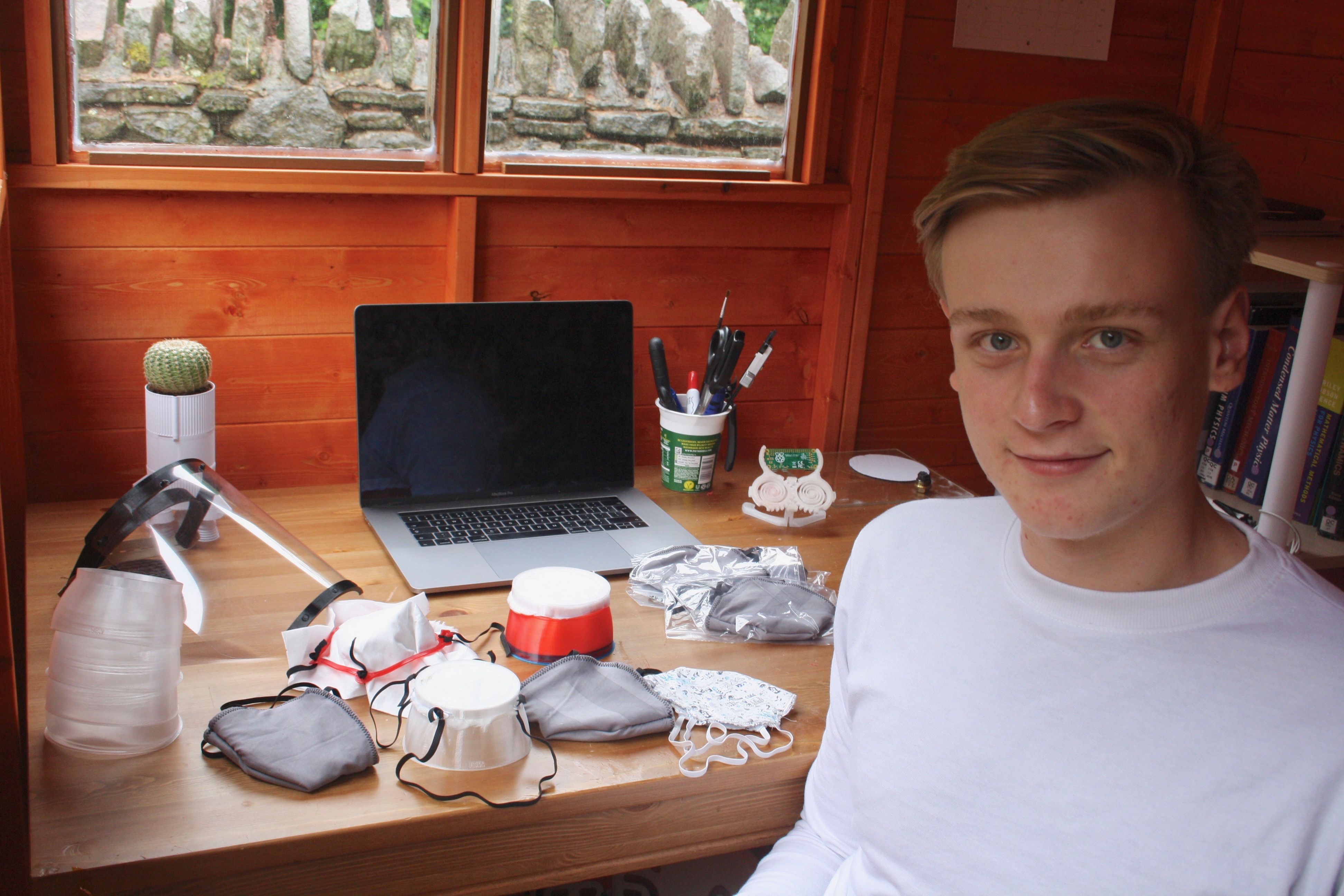Student scientist spends lockdown finding best way to make effective homemade masks
“Designing a face mask that optimises filtration and is easy to clean will be a great aid in ensuring as many people as possible are protected”
Homemade masks should be made from high quality cotton with layers of other textiles underneath to slow the spread of Covid-19 – according to research by an undergraduate at St John’s.
Jago Strong-Wright, Natural Sciences student, has reviewed the efficacy of masks made from material people can find around the house, from vacuum cleaner bags to old lycra leggings and cotton bedsheets. His work has been published by Preprints.
The use of face masks during the Covid-19 pandemic has been the subject of much debate, with many countries instructing people to wear them to protect themselves and those around them from the infection. In England, masks are only currently compulsory on public transport and as an outpatient or hospital visitor.

The second-year student’s interest in personal protective equipment (PPE) began early in the pandemic when he volunteered to help create visors for healthcare workers on his 3D printer. Away from the frontline, many people without access to masks were improvising and making their own face coverings, but Jago was surprised to find so many different views on the most effective materials and designs.
He said: “I started reading about the materials and other aspects out of interest and I decided to write a paper to bring all the evidence together because there was quite a lot of conflicting information. I thought I’d try to find out what the consensus was from other people’s findings.”
Jago reviewed various published studies on protective masks for his report. In it, he concludes that it is ‘highly likely’ the wearing of face masks reduces the rate of respiratory infections such as Covid-19. A mask made from high thread-count cotton provides a reasonable level of protection and adding two other layers inside such as chiffon, silk or lycra will make it even more efficient.
Jago suggests every mask should be tested to fit the individual and his research also highlights the importance of hand washing when taking a mask on and off and how, after a mask is worn, it should be placed into a sealed bag to prevent contaminating the user.
He said: “Everyone should have access to a mask that is effective and properly protects them and everyone else around them, especially those who are more vulnerable. As we potentially move out of lockdown and into the next stages of returning to normality, it is essential to keep in mind social distancing practices, personal hygiene and the use of effective personal protection equipment.
“Designing a face mask that optimises filtration and is easy to clean will be a great aid in ensuring as many people as possible are protected.”

Jago has made some masks himself during his research, helped by his sister, a keen seamstress. He now hopes his findings will benefit others. He said: “Many members of the public are making masks that probably aren’t very good and I’d hope that people will use my study to make more effective ones. Lots of people have materials around the house such as cotton and lycra, which they can use to make their own masks. There isn’t much consensus and people just need to know what materials work.”
Jago had support from a number of academics including Dr John Leake, a Fellow of St John’s and former University Senior Lecturer and College Lecturer in Materials Science. He said: “The ongoing debate about making the face-masks needed because of the pandemic caught Jago’s attention so effectively that he was able to write this review, which in itself also demonstrates the enormous range of resources now available online to a skilful researcher. Nevertheless few undergraduates will have produced published articles from their lockdown fastnesses so it is great to see Jago's success.”
In addition to explaining how to make masks that work better, Jago plans to continue to help to produce protective masks for other key workers such as public transport and shop staff. But does he think more people in the UK should be wearing masks, even if they aren’t compulsory? He said: “There’s a lot of evidence that it would be helpful if more people wore masks, so I think it would be sensible.”
Jago has also written an article on his findings in Cambridge University’s Science Magazine, BlueSci.
Published: 22/06/2020